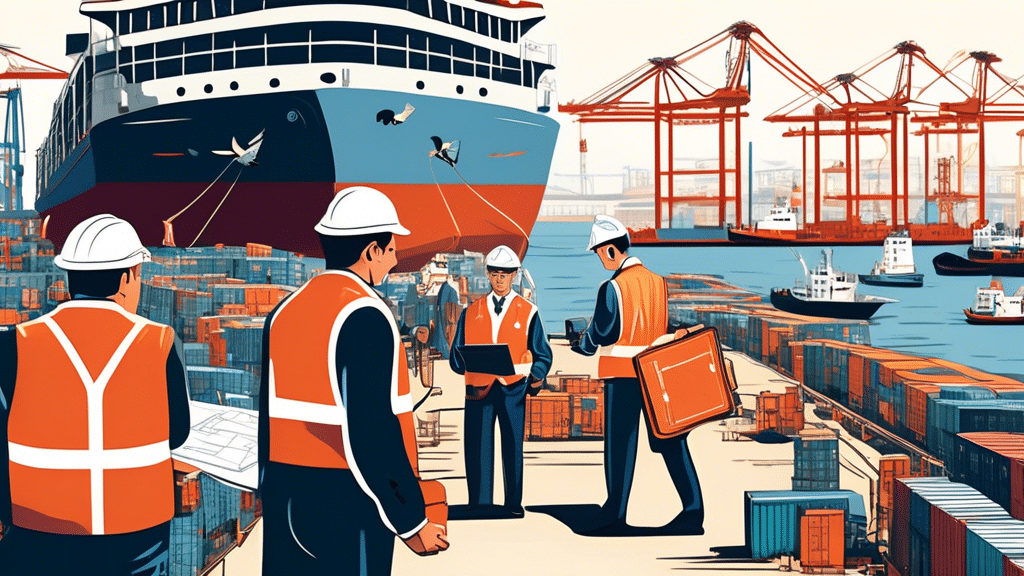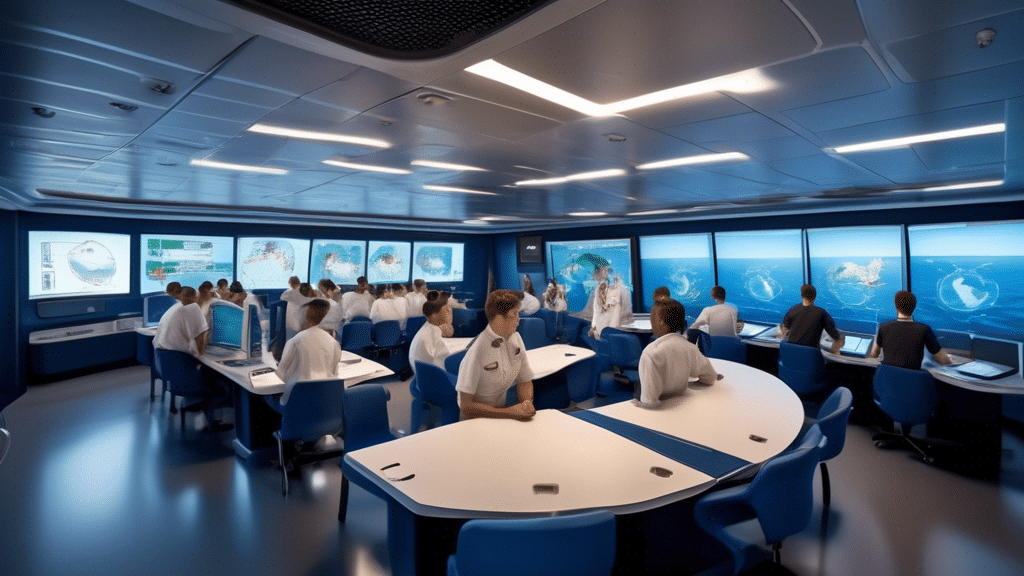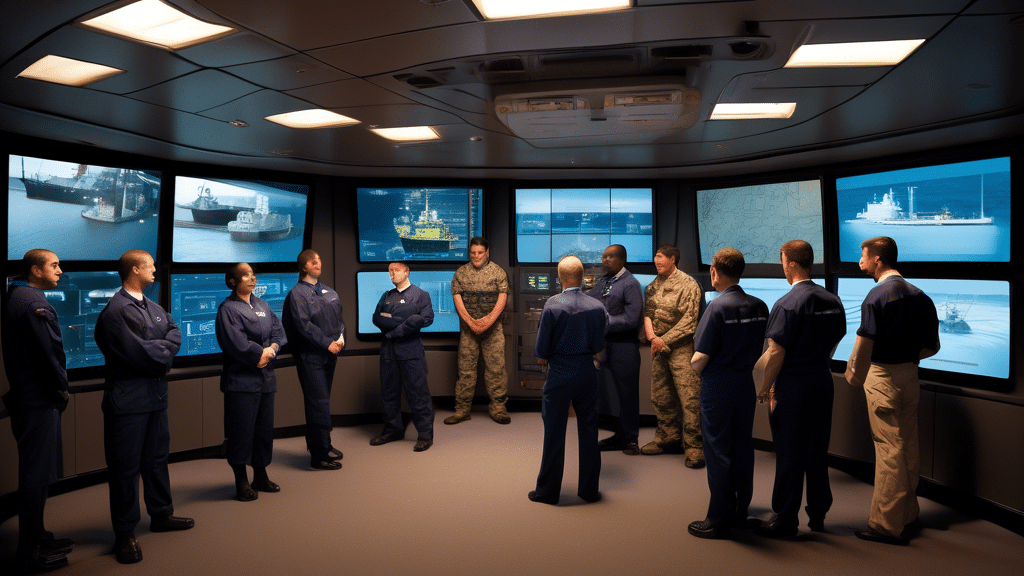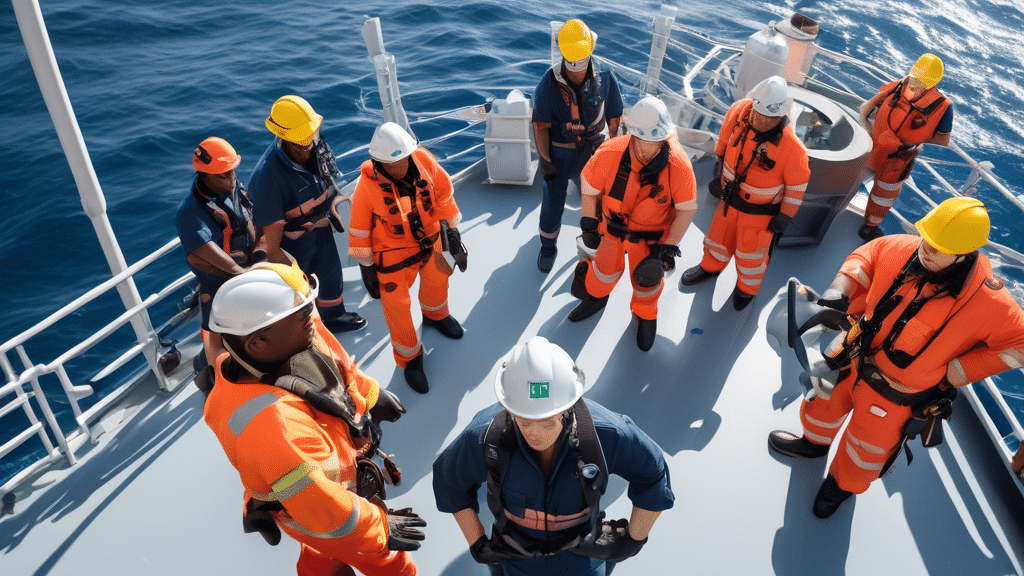In the labyrinth of maritime logistics, robust security systems in port operations stand as sentinels, vigilantly protecting the veins of global trade. As ports burgeon into bustling nexuses of import and export, the safeguarding of these hubs against a spectrum of threats becomes paramount. To mitigate risks and bolster resilience, adopting cutting-edge security infrastructure is no longer a luxury but a necessity. Embracing this imperative, port authorities are increasingly deploying advanced surveillance systems, stringent access control protocols, and sophisticated cybersecurity measures.
Today’s port operations are underpinned by a delicate balance of precision and protection. High-definition cameras, biometric access systems, and robust data encryption are the cornerstones of a fortified environment. By weaving together these technologies, ports can ensure the integrity of their operations, deterring unauthorized access and thwarting potential cyber-attacks. As the stakes rise, understanding and implementing these high-caliber security measures becomes a critical investment in the future of maritime trade.
Enhancing Port Operations with State-of-the-Art Security Infrastructure
Introduction to the Importance of Security in Port Operations
In today’s globalized economy, seaports act as critical nodes in the supply chain, facilitating international trade and commerce. With massive volumes of goods moving through these gateways, the need for robust security measures becomes paramount. Effective security not only safeguards assets but also ensures the smooth operation of port activities, deters criminal activities, and enhances overall efficiency. From thwarting cargo theft to preventing terrorism, the importance of implementing cutting-edge security infrastructure in port operations cannot be overstated.
Key Technologies for Strengthening Port Security: Surveillance, Access Control, and Cybersecurity Measures
Surveillance Systems
Modern surveillance technology acts as the eyes and ears of a port, providing comprehensive monitoring and real-time data analytics. High-resolution CCTV cameras, equipped with AI-driven software, enable continuous oversight of every corner of the port. By utilizing motion detection, facial recognition, and pattern analysis, these cameras can quickly identify and alert security personnel to potential threats. Drones also play a pivotal role, offering aerial surveillance to monitor vast port areas and hard-to-reach locations, thereby ensuring no blind spots.
Access Control Systems
Controlling who, when, and how individuals gain access to specific areas within the port is fundamental to maintaining security. Biometric access systems, which use fingerprints, facial scans, and iris recognition, offer unparalleled accuracy and security. Coupled with smart card technology and RFID tags, these systems can restrict access to sensitive areas such as cargo holds, control rooms, and customs areas. Moreover, integrating these access control mechanisms with real-time databases ensures swift denial of entry to unauthorized personnel, enhancing overall security efficacy.
Cybersecurity Measures
In an era where digital threats loom as large as physical ones, fortifying cybersecurity is indispensable. Port operations rely heavily on sophisticated IT systems for cargo management, navigation, and communications. Implementing robust firewalls, intrusion detection systems (IDS), and regular software updates shields these systems from hacking attempts and malware. Encrypting sensitive data, alongside conducting regular security audits, ensures the confidentiality, integrity, and availability of critical information. Cybersecurity doesn’t end with technology; training staff to recognize phishing attempts and other cyber threats forms a crucial layer of defense.
Integration and Collaboration
The ultimate power of these security technologies lies in their integration. A seamless symphony between surveillance, access control, and cybersecurity measures forms a robust holistic security framework. For instance, integrating surveillance systems with access control can cross-verify the identity of individuals, while data from cybersecurity protocols can inform potential physical threat scenarios. Furthermore, collaboration with local and international law enforcement agencies, maritime authorities, and private security firms ensures a multi-layered defense strategy, making ports resilient against a myriad of threats.
Implementing and maintaining such security measures not only protects the port from immediate threats but also builds trust among stakeholders—shipping companies, government agencies, and the general public. Leveraging advanced technologies to bolster port security is a compelling investment towards future-proofing global trade and safeguarding economic stability.
Discover More About Our Courses Here!
Best Practices and Strategies for Effective Security System Implementation in Ports
Case Studies of Successful Port Security Integrations
The Port of Rotterdam, the largest in Europe, spearheads efficient security protocols through a combination of cutting-edge technology and strategic partnerships. Leveraging an advanced surveillance system that includes high-definition cameras and automated sensors, it monitors activities with precision, ensuring swift identification and response to potential threats. Moreover, its collaboration with cybersecurity firms fortifies its digital infrastructure against sophisticated cyber attacks.
Similarly, the Port of Singapore stands as a beacon of excellence in port security. It utilizes a comprehensive approach that integrates physical security measures with state-of-the-art cybersecurity solutions. By harnessing the power of AI and machine learning, the port boosts its surveillance capabilities, reducing human error and enhancing response times. The Port of Singapore’s proactive stance in sharing intelligence and best practices with other international ports further solidifies its security framework.
Steps for Implementing Comprehensive Security Measures
1. Risk Assessment
Identifying vulnerabilities and potential threats is the bedrock of robust port security. A thorough risk assessment involves evaluating both physical and cyber risks. Engaging with experts to carry out detailed audits can unearth hidden weaknesses. A blend of historical data analysis and predictive modeling helps mitigate future risks.
2. Policy Development
Crafting a robust security policy that encompasses all aspects of port operations is indispensable. Policies should clearly define access controls, surveillance protocols, and response strategies. Inclusion of a cybersecurity policy that outlines data protection, threat detection, and incident response measures is crucial. Collaborating with stakeholders, including government bodies and private entities, ensures a holistic and enforceable policy framework.
3. Implementation of Advanced Technologies
Deploying the latest technology enhances the effectiveness of security measures. Automated drones, biometric scanners, and AI-driven analytics play pivotal roles in streamlining surveillance and access control. Furthermore, integrating these technologies into a unified security management system enables real-time monitoring and swift decision-making.
4. Continuous Monitoring
Vigilant monitoring is essential to maintain security integrity. Establishing a centralized command center capable of overseeing all operations ensures cohesive and comprehensive surveillance. Regular drills and simulations help ascertain the readiness of security systems and personnel. Continuous monitoring also includes regular updates to technological systems to thwart evolving threats.
5. Training and Awareness Programs
Human error remains a significant risk factor in security breaches. Regular training for all personnel, tailored to their roles, increases awareness and preparedness. Simulations of potential threats and breach scenarios improve response times and efficacy. Awareness programs should extend beyond port staff to include partners and stakeholders, fostering a culture of security vigilance.
6. Collaboration and Information Sharing
Ports do not operate in isolation; hence, collaboration with other ports, maritime authorities, and security agencies enhances collective security. Sharing intelligence and best practices leads to improved threat detection and response. Participation in international forums and initiatives can provide access to additional resources and support.
Implementing comprehensive security measures is a systematic process that requires meticulous planning, advanced technologies, and continuous vigilance. By following these best practices and strategies, port operations can achieve unparalleled security standards, safeguarding assets and ensuring the smooth flow of global trade.
In today’s interconnected global economy, robust security infrastructure in port operations is non-negotiable. State-of-the-art security measures, incorporating advanced surveillance systems, stringent access controls, and resilient cybersecurity protocols, are imperative. These technologies significantly enhance the efficiency and safety of port operations, bolstering both physical and digital security.
Drawing from exemplary case studies, the successful integration of these systems is evident, manifesting substantial enhancements in operational security. Implementation necessitates a methodical approach: conducting thorough risk assessments to identify vulnerabilities, developing comprehensive security policies tailored to specific risks, and instituting continuous monitoring practices to ensure the efficacy and adaptability of the security measures.
By prioritizing these practices, ports can achieve robust security postures, safeguarding assets and ensuring the seamless flow of global trade.














